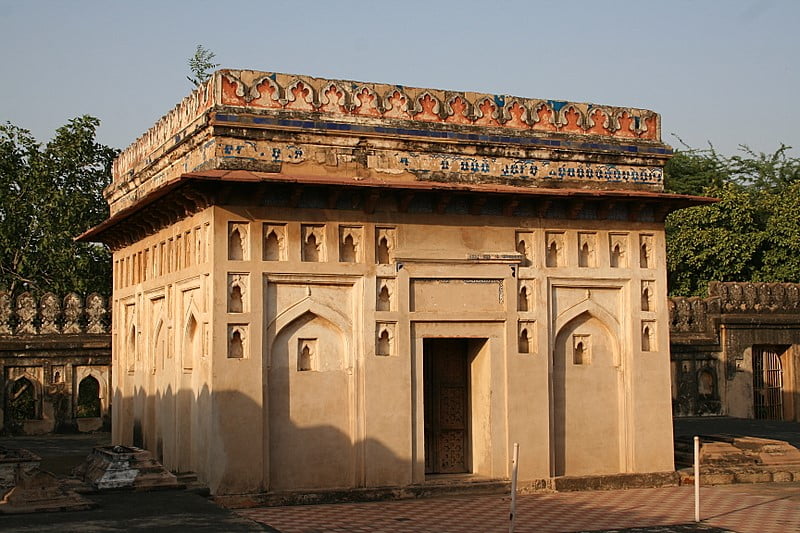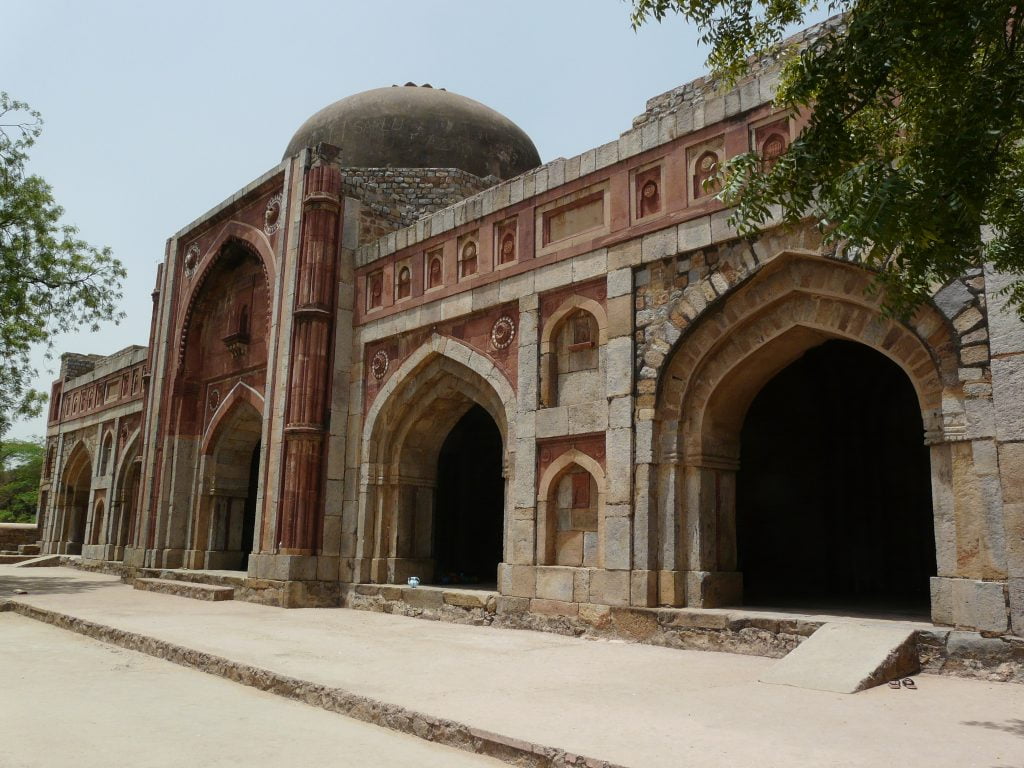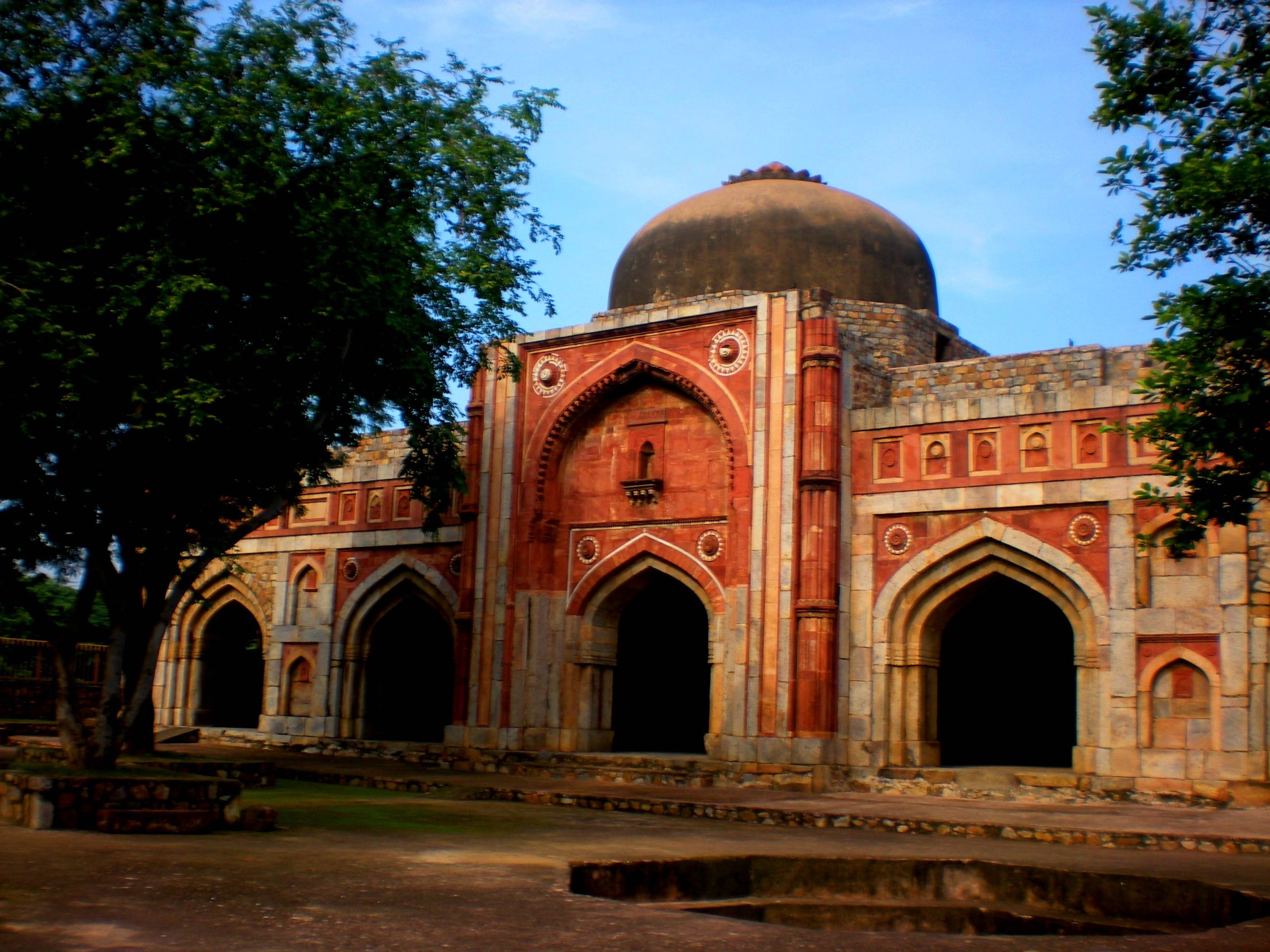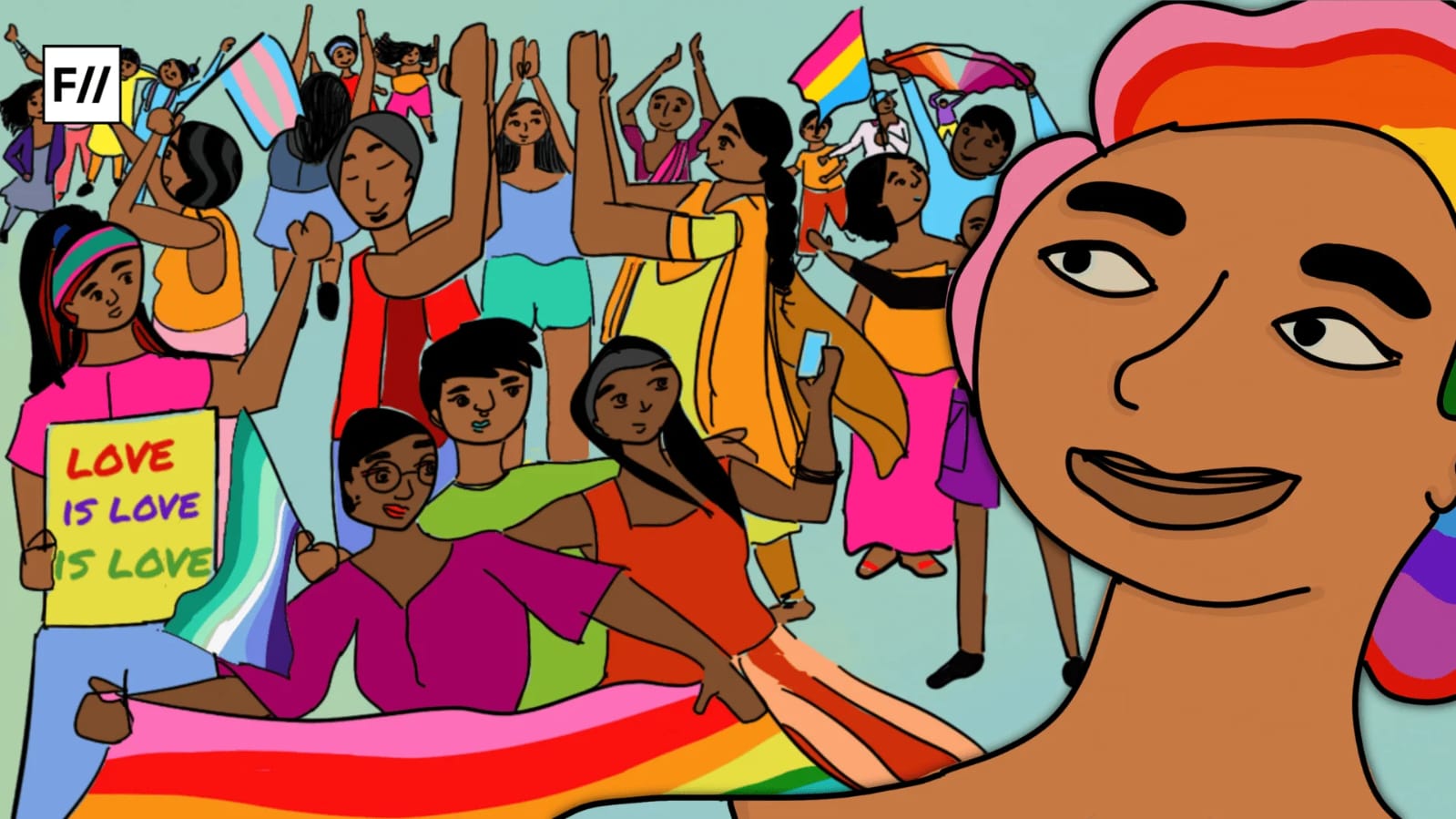The precincts of Lal Kot in Delhi—including the areas of the Qutub Minar complex—are surrounded by trees, often deserted, and have a flat roof and a shallow well-like structure. In the region lies the Dargah of the Jamali Kamali, profoundly called “The Jewel Box.”
The complex – Jamali Kamali Mosque and Tomb – are beside each other. The monument was built in the 16th century during Sikandar Lodi’s reign. Later, the well-known Sufi saint Sheikh Hamid bin Fazlu’llah—known by his pen name Jamali Kamboh—restored the location. However, as per the popular narratives today, the Jamali Kamali Mosque and Tomb have become symbols of queer love.
This complex, in the era of oral traditions, where the narrative of Jamali Kamali Mosque and Tomb has been classified as purely ‘lovers,’ remains contestable, as Kamali’s relationship towards Jamali remains uncertain. Noor, a PhD scholar from Jamia Millia Islamia suggests, ‘It is noted that both graves have a symbolic pen box, indicating they were both men.’ She further suggests what remains true is that Kamali was unarguably a man.
Despite the lacking historical evidence of whether Jamali Kamali Mosque and Tomb owes any Queer history, it has, regardless, become a symbol of love and acceptance for the LGBTQ+ community.
Architecturally, the male tombs have pen boxes constructed on them, symbolising the belief that a man writes his wife’s fate. On the other hand, women’s graves have slate carved on them, says Sohail Hashmi, Heritage Walk organiser and author.
However, despite the lacking historical evidence of whether Jamali Kamali Mosque and Tomb owes any Queer history, it has, regardless, become a symbol of love and acceptance for the LGBTQ+ community. Erin, a former queer collective representative, says, ‘It’s dubbed the “gay Taj Mahal” for a reason. The architecture of the tomb, the way their graves lay right next to each other, the poems written by Jamali are all undeniably queer and are a testament to the existence of queer love and desire.’

Hashmi further notes, ‘Inside the mausoleum, Kamali’s grave is placed to the left of Jamali. Usually, this is the place left for a wife or those junior to the grave of the person buried to their right. Therefore, it is generally assumed that this is the grave of a disciple. One can only surmise that they could have been a homosexual couple, as in the case of the Sufi Saints Shah Hussain and Madho Lal in Lahore.’
In the courtyard surrounding Jamali-Kamali’s tomb are several graves of women with flat tops. The roof of the building housing the tombs is flat, which is unique as male graves usually have pen boxes on top. Madhavi Menon, in her book “Infinite Variety: A History of Desire in India,” says that the building’s design is, therefore, to a certain degree androgynous, with a female flat roof on the outside and a male phallic pen on the inside. This adds to the central mystery surrounding Kamali’s identity.
Hashmi further notes, that while there isn’t any proof to positively identify Kamali, it is undeniable that he was a man- evident from the pen boxes built on the dargah’s graves.
Eshan Sharma, author and founder of Karwaan: The Heritage Exploration Initiative, says, ‘There are various suppositions regarding the true identity and relationship between Kamali and Jamali. One popular belief is that they were siblings, born to the same parents, who had a penchant for choosing names that rhymed with each other. This theory suggests that the two individuals shared a familial bond that was reflected in their similar-sounding names.’ He later adds that this theory doesn’t make sense because the name ‘Jamali‘ was adopted by the Shaikh later in life. Others suggest that Kamali was Jamali’s best friend, a devoted follower, a fellow poet, a local villager, or even his spouse.
Queer histories have always been appreciated and seen as a delineation of queerness. Historical monuments in India have played a significant role in portraying the country’s rich cultural heritage. Noor suggests, ‘A large number of erotic artwork depicting homosexuality can be found on numerous temples throughout India, including Khajuraho temple sculptures built in the 700s, and the Sun temple in Konark built in the 1200s. Jamali Kamali is a prime example of the popular narratives of “male love story” on the site.’
Aanya Segat, a former queer collective President, says, ‘Throughout the years, this space has transformed into a significant representation of hope, strength, and endurance for the LGBTQ+ community. This space is a testament to our enduring struggle for liberation, impartiality, and the fundamental right to exist as our true selves without fear or judgment.’
As the people belonging to the LGBTQ+ community suggest, due to pertaining homophobia and heteronormativity, Queers have not had access to love, either as a representation or as a form of life. Or, they have had access to it only at the expense of their queerness; love has offered an escape—often desired, sometimes despised—from the abnormality of being queer. ‘These are Legends, and Legends are always intertwined with myths, but even if myths, if we can celebrate the queer representation, it’s proved to be positive,’ says Eshan Sharma.

Sarthak Paliwal, an author and a master’s student who recently led an educational walk to Jamali Kamali Mosque and Tomb, suggests, ‘I believe that only those who accept history as presented by popular sources without delving deeper are likely to misrepresent it. History is not a linear subject, and it is important to explore both local folklore and historical records to gain a comprehensive understanding of queer narratives. Therefore, I strongly believe that Jamali Kamali’s story should be heard through both these lenses to provide an accurate representation.’
The monument in question has been a subject of debate among scholars and critics regarding its queer origins and significance. While some argue that there is insufficient evidence to support the claim, the queer community has embraced it as a symbol of their identity, often referring to it as the “Queer Taj Mahal.”
Despite the controversy surrounding its origins, historians agree that monuments like this have played a vital role in preserving and showcasing the country’s rich cultural heritage, including the queer narratives that have shaped the nation’s history. Furthermore, these monuments have provided a platform for queer history to find an affirmative background, which is crucial for the community’s recognition and representation.
About the author(s)
Kulsoom Faiz (she/they) is a Delhi based free lance journalist, She writes on gender, culture and on marginalised communities.





